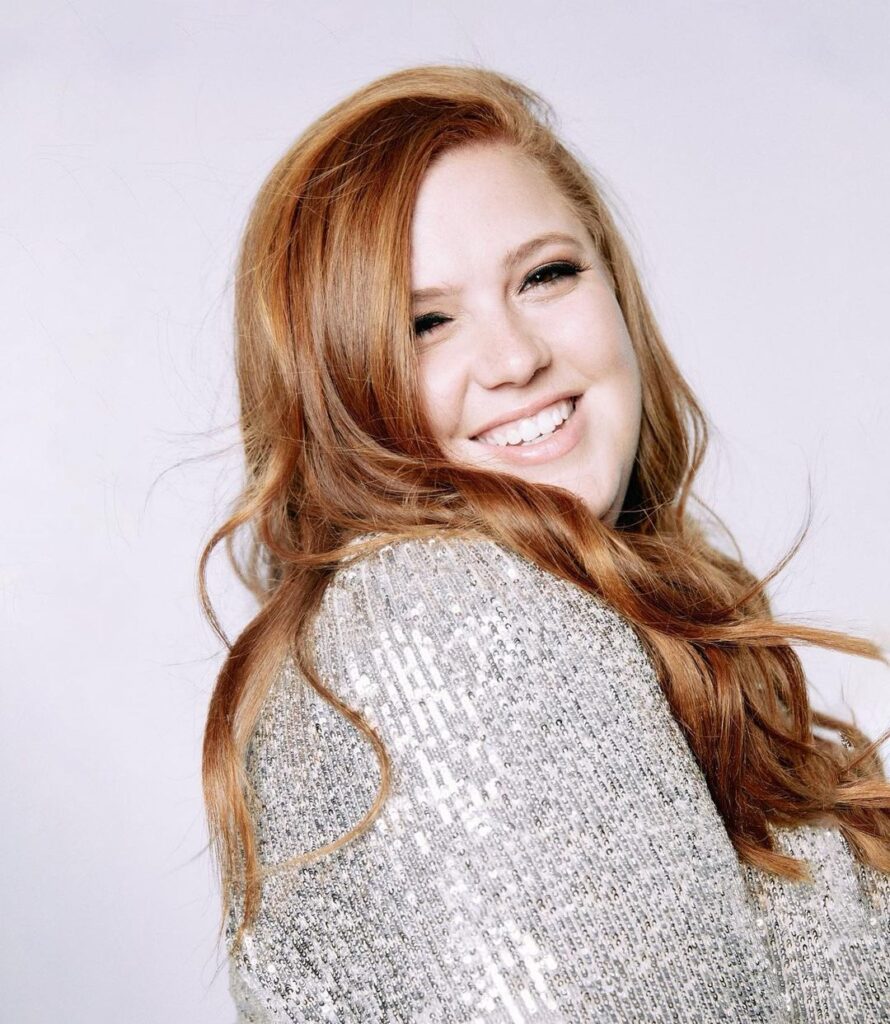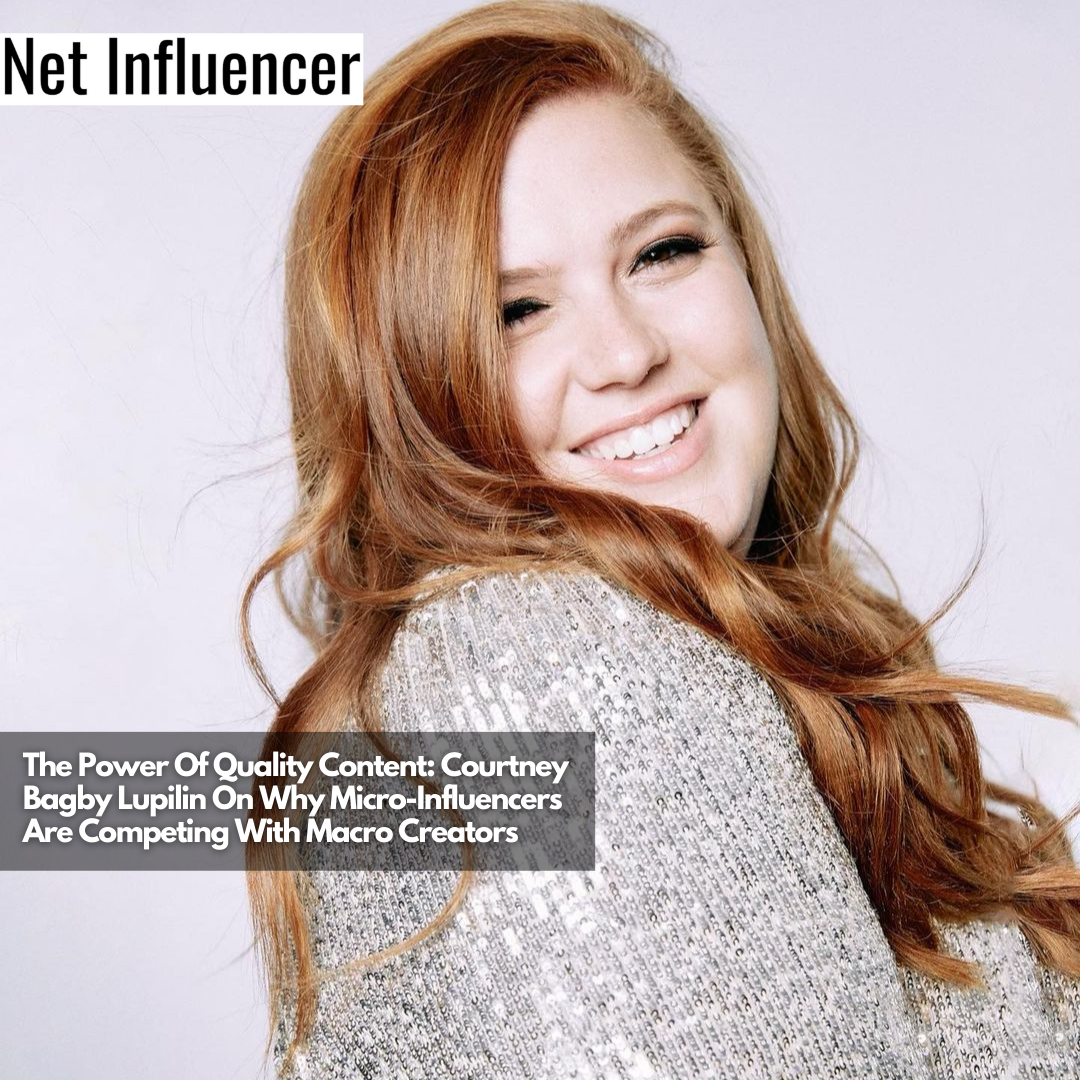Agency
The Power Of Quality Content: Courtney Bagby Lupilin On Why Micro-Influencers Are Competing With Macro Creators
Courtney Bagby Lupilin, the founder of Little Red Management, offers valuable insights into the world of influencer marketing and the rising success of micro-influencers. She highlights the advantages of micro-influencers in terms of affordability, content longevity, and their ability to provide high-quality content. With a focus on strategic management, Courtney shares success stories of influencers who started small but achieved significant growth through brand collaborations and understanding their audience preferences.
Courtney Bagby Lupilin, the founder of Little Red Management, shares her background and journey into the world of influencer marketing and working with reality TV talent. She expresses her passion for reality TV, stating, “I have always been the biggest reality TV fan. Fan since probably high school at this point. So probably around 15 years now.”

Courtney’s interest in social media and advertising led her to pursue a career in influencer marketing. She noticed that reality TV personalities were gaining a presence on social media platforms and even earning income through their following. Courtney says, “We’re able to actually get paid from having a following. I just thought it was the coolest thing and wanted to be a part of it.”
After gaining communication and business skills in the tech industry, Courtney started Little Red Management to work directly with reality TV stars. She says, “And honestly, it’s been mostly word of mouth of how I’ve gotten more clients. And also me doing outreach in the early days of like, ‘Hey, this is who I work with. Essentially give me a chance, let me help you make money, you know?'”
Courtney emphasizes the importance of her relationships with talent, stating, “But my relationships with talent were always the most important to me. And also as a fangirl, that’s what I wanted, you know? I wanted the inside scoop of what was going on behind the scenes.”
The Power Of Quality Content: Courtney Bagby Lupilin On Why Micro-Influencers Are Competing With Macro Creators
Overview of Little Red Management
Little Red Management specializes in social media brand partnerships, primarily on Instagram and TikTok. Courtney highlights their approach, saying, “The main thing that we offer is social media brand partnerships. That is really our bread and butter.” She also mentions that YouTube is not as popular for reality TV stars post-show.
Apart from partnerships, Little Red Management assists clients in achieving their goals, such as starting a book or securing opportunities in other TV shows or acting roles. Courtney emphasizes their personal touch, stating, “You better believe I also put my own personal touch on things and always pester them about making sure that they’re posting on social media and having more of a personal relationship with them.”
When asked about what sets Little Red Management apart, Courtney expresses, “I think the reason I differentiate is because all of my clients are sort of like family to me. I truly care about their success and making things happen for them.”
She then proceeds to highlight their availability, honesty, persistence in securing desired campaigns, and organizational skills, ensuring they are responsive, communicative, and proactive in managing client content and financial matters.
Examples of Activated Celebrity and Influencer Partnerships
When asked about activating celebrity and influencer partnerships with brands like Disney, Nike, and Amazon, Courtney shares her approach. She mentions being persistent in finding the right contacts and agencies at these brands, often using her detective skills. She tells us, “I almost find it as a little hide-and-seek competition, and it’s like I win the game once I find the contact.”
For Disney, they approached Courtney directly with a new TV show and asked for reality TV stars who would be interested in promoting it or attending events related to the show. Courtney carefully selects the best matches based on who she thinks would watch the TV show and genuinely want to promote it.
With Nike and Amazon, the focus was on specific campaign requirements. For example, Nike needed runners, and Courtney admits she doesn’t have many runners in her roster of reality TV stars. However, she would send a few individuals who are actively participating in marathons or running events to explore potential collaborations.
Persistence is crucial in maintaining these partnerships. Courtney emphasizes the importance of following up and creating strong relationships to ensure brands return for future campaigns.
Key Reasons Behind the Shift in Influencer Marketing Where Micro-Influencers Are Earning as Much as Macro Creators
The shift towards micro-influencers in influencer marketing is primarily driven by their affordability and the ability to obtain multiple pieces of content. According to Courtney, “The main reason why we’re seeing the shift and influencer marketing going to micro-influencers versus macro is because they are more affordable.”
Micro creators, priced at a thousand dollars, can provide ten pieces of content compared to a single piece from a macro creator costing $10,000. Courtney highlights that brands prefer the lower risk and higher potential visibility offered by multiple micro-influencers. She states, “They’re gonna go with the 10 micro creators potentially… not as much of a risk for them to spend $10,000 on one creator when they can get ten creators.” This abundance of content allows brands to leverage “ten pieces of tangible video content that are like mini commercials” in their paid media.
How the Quality of Content Produced by Micro-Influencers Impacted Their Ability to Compete With Larger-Scale Influencers
The ability of micro-influencers to compete with larger-scale influencers in terms of earnings is closely tied to the quality of content they produce. For Courtney, “The fact of the matter is, brands want quality content.” Brands prefer working with creators who can provide high-quality content that rivals what can be achieved through traditional production methods.
Courtney also emphasizes the importance of putting effort and dedication into each campaign, regardless of the influencer’s follower count. She states, “The better quality that these content creators can deliver at the micro level, the brand will just spend behind it.” The impact of the content is determined by the brand’s investment, rather than solely relying on the influencer’s fame or status. Whether it’s a micro-influencer with 10,000 followers or a celebrity like Brad Pitt, the content’s reach can be maximized with proper investment.
Perks of Micro-Influencers Allowing Brands to Use Their Content
Courtney explains that the advantages of working with micro-influencers lie in their ability to allow brands to use their content for a longer period of time compared to celebrity talent and macro creators. She highlights the importance of content perpetuity, stating, “If any creator allows content to be used in perpetuity, which means forever, it is way more likely that the brand is gonna hire them.”
Courtney points out that this benefits brands by eliminating the need to manage content usage timelines and providing more flexibility. She emphasizes that being able to use the content forever is a significant advantage for brands but adds a humorous remark as a manager, saying, “They better pay a pretty buck for that.”
Top Three Things That Brands Look for When Analyzing the ROI of an Influencer Campaign
According to Courtney, the top three things that brands look for when analyzing the ROI of an influencer campaign are:
- Sales from unique links and codes: Brands commonly track the sales generated through unique links and codes provided by influencers. Courtney mentions that this is a well-known way to measure ROI.
- Impressions and views: Brands also consider the reach and engagement of the influencer’s stories and posts. The number of impressions and views serve as metrics to evaluate campaign success.
- Quality of content: Courtney emphasizes the importance of the content’s quality and its usability for the brand’s own social media channels. Brands value content that aligns with their branding and can be repurposed effectively.
By assessing these factors, brands gain insights into the effectiveness and impact of their influencer campaigns.
Why Video Content Is Effective
Video content is crucial in influencer marketing as it caters to people’s preferences for short and engaging clips. Courtney highlights the popularity of video platforms, stating, “I would say the majority of my friends scroll TikTok or reels for three to five hours every night.” She believes video content provides an authentic connection and encourages influencers to be themselves without filters or body alterations, resonating with their audience.
How important is it for micro-influencers to choose a specific niche and stick to it? What impact does it have on attracting the attention of bigger brands?
Courtney emphasizes the importance of micro-influencers choosing a specific niche and being consistent in their content creation. She believes that having a niche and producing high-quality content attracts the attention of bigger brands who value professional photography and videography. She states, “The bigger brands want high-quality content that’s from photographers and videographers. So if they can do that, they will get campaigns from bigger brands.”
Case Studies of Micro and Nano Influencer Clients Earning More Than Macro Influencers
Courtney mentions that micro and nano influencers are often making more money than some macro influencers, explaining that this success can be attributed to their consistency, the quality of their content, and having found their niche. She states, “The reason why some micro and nano creators are actually making more money than some macro influencers these days… comes down to just the fact that they have found their niche. They create high-quality content. And they’re consistent with their posting.”
She contrasted this with macro influencers, some of whom she manages, that might only post once a month. The lack of consistent posting can lead to less income, even with a larger follower base.
Courtney also touches on the phenomenon of influencers who gain a large following quickly (for example, through a reality TV show) but who fail to secure brand deals due to inconsistency in posting quality content. She concludes, “You can’t come from a reality TV show and have a million followers and expect to get brand deals if you’re not consistent in producing quality content.”
Importance of Engagement in Micro-Influencers
Courtney shares her insights on the role of engagement levels in the earning potential of micro-influencers. According to her, engagement levels do matter, as brands are always interested in views, but the current trend leans more towards the quality of the content and its potential for paid media promotion.
Courtney elaborates, “The engagement level of creators in general, especially in the micro realm, do matter in the sense of, of course, every brand is gonna want views. But I think that the biggest thing these days… is the fact that they can put paid media behind it and boost the content.”
She further clarifies that as long as the content is good and brands are willing to invest in promoting it, sometimes the engagement levels might not matter as much if there’s paid promotion behind the content. In summary, the quality of the content and its potential for promotion can sometimes outweigh engagement metrics in terms of earning potential.
How Micro-Influencers Can Leverage Their Usage Rights to Attract Better Brand Partnerships
Courtney explains, “Micro-influencers can leverage their usage rights to attract better brand partnerships because brands actually use their content longer. They can pay more as well, making it more beneficial when creating content.” She adds, “A lot of larger macro creators will not provide longer usage rights. Therefore, you kind of have a one-up in that department when you’re a micro.”
Challenges Do Reality TV Stars Face When Transitioning Into the Influencer Marketing Space
Courtney highlights the unique challenge reality TV stars face when transitioning into the influencer marketing space. She states, “The number one challenge that reality stars face is the fact that it is a whole new job for them. With a new job comes new responsibilities, a new routine, new everything.” She emphasizes that their work is now in a public setting and subject to judgment by millions of people.
As a manager, Courtney aims to support them through this transition. She explains, “When I first bring on a client from reality TV, I’m more so trying to be their support system. I help them get into a routine where they can post consistently and make content creation a part of their daily thoughts.”
She also offers resources like photographers and videographers to assist them in creating content they love and feel confident about. This personalized support sets Little Red Management apart from other management companies.
Success Stories of Influencers Who Started With Small Followings and Achieved Growth Through Strategic Management and Brand Collaborations
Courtney shares success stories of influencers who started with small followings but achieved significant growth through strategic management and brand collaborations. She mentions her food blogger and YouTuber clients as examples. She explains, “They know what does well for them, and they analyze what performs best, creating more content around that. They have a marketing background and are entrepreneurs at heart, building their platforms from the ground up.”
Courtney highlights the growth of one food blogger client, stating, “She has grown 100% this year, going from around 130,000 to 275,000 followers, just from her recipes and the content that resonates with her audience.” She attributes their success to creating appealing recipes, using good music, and employing effective strategies. These examples demonstrate the impact of strategic management and understanding audience preferences in achieving substantial growth.
How Courtney Sees the Future of Influencer Marketing Evolving
Courtney acknowledges that the future of influencer marketing is uncertain and will require effective communication between managers and macro creators. She emphasizes the importance of consistency, finding a niche, and understanding the value of allowing longer usage rights.
Courtney explains that even high-profile influencers need to recognize that brands require extended usage for their campaigns. She has adapted her approach with clients by discussing the terms and rates with transparency and flexibility, especially during slower economic periods. This approach helps foster open conversations and collaboration with macro creators in navigating the evolving landscape of influencer marketing.
Her Predictions on How the Influencer Marketing Space Will Evolve in the Coming Months
“As we approach the latter half of the year, I am hopeful that it is going to be more busy than the first half,” Courtney states optimistically. She believes brands have reevaluated their strategies and are now more focused on figuring out what works for them. “The first half of the year is usually a time for planning and evaluating,” she adds.
Courtney also shares her curiosity about new platforms and trends. Regarding Threads, she recalls how the launch of similar platforms like BeReal generated significant discussion among brands and agencies. However, she never received a campaign for BeReal, so she wonders if Threads will have a different impact on the brand space.
Additionally, she expresses her observation that Twitter is not as prevalent in brand campaigns and ponders whether it will gain more prominence in the future. “I’m curious to see if that’ll play into the brand space at all,” she muses.
What’s Next for Little Red Management
Courtney shares some exciting projects and upcoming plans with Little Red Management. She mentions, “I actually just hired another employee this week, so I’m super excited that we’ll be having another employee join the team.”
Furthermore, Courtney expresses her enthusiasm for their clients who are expecting babies within the next nine months. She says, “So been super excited about that and like being able to get more fun campaigns around that as well because, like, yeah, who doesn’t love baby campaigns?”
Additionally, she mentions some one-off campaigns they are working on with notable brands such as Travel Holiday, Angie, Eventbrite, and Home Depot.
Advice to Micro-Influencers Who Want to Attract Higher-Paying Deals
Courtney offers a series of valuable tips for micro-influencers who are seeking to secure higher-paying deals, regardless of their follower count. Her main points were focused on the quality of content, frequency of posts, and following trends.
She explains, “Quality content. But when I say quality, I mean like a good camera or great editing, but also just like maybe a great iPhone with great transitions. Right. And like, not in a poorly lit room but a well-lit room. High-quality content.”
She also talks about the importance of consistent posting. “My most successful creators are posting five times a week. Like I used to say at a minimum of three times now, I think it’s more so being five to seven. It’s okay to post every day,” she shares. This level of activity keeps the content fresh and maintains audience engagement.
And for influencers who are looking to grow their audience, Courtney suggests that they pay attention to what’s trending and create related content. “Work on content that’s going to be trending and try to be creative there so that you can grow your audience as well,” she adds. This strategy not only attracts more followers but also provides a boost in engagement.





















